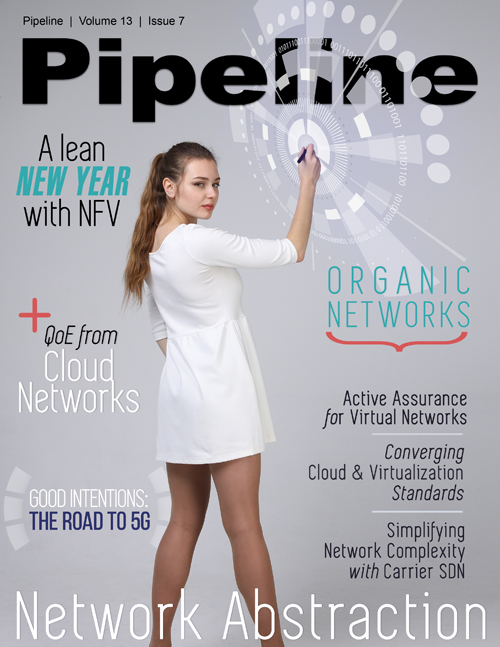The critical role of Active Assurance in the context of SDN and NFV
Finally, a key element to unlocking the full value of virtualized networks is automation. Massively scalable networks, built in software and continuously optimized simply cannot be managed effectively by humans. Automation unlocks a whole new dimension in service management that is not possible in traditional networks. Not only can services be created, deployed and monitored autonomously, but they can be managed by the customer themselves. On-demand service creation or modification can be handled in real-time, through a customer portal without the need for manual intervention by the service provider. The network itself will handle everything from resource allocation, service instantiation, service testing and billing - and all in near real-time.
There is, however, a risk associated with this new paradigm. While the general trend is toward automated, customer managed service creation, customers are becoming less willing to accept sub-par quality of service. Self-service does not mean best effort. Service providers need to meet or exceed customer expectations from day one or else risk losing them to the competition.
Fundamentals of service assurance and analytics in NFV/SDN
Whether the network is a traditional network or a virtual network, there is only one true measure of success – Customer Satisfaction, and the revenue growth this will bring. In the end, the customer doesn’t care about the technology used to deliver their service; they only care that their service delivers what was promised. In fact, the shift to virtualized networks makes this even more critical since automated, dynamic service creation means customers can change providers very easily. Customer retention becomes solely dependent on the customer Quality of Experience (QoE), which the ITU-T has defined as, the “overall acceptability of an application or service, as perceived subjectively by the end-user".
So how will service providers manage their customers’ QoE in a virtual network where the service is built in software and the network is constantly changing to optimize performance? It turns out, this can be done using many of the same tools used in traditional networks, but adapted to software, or Virtual Network Function (VFN) applications, that are dynamically instantiated when and where needed.
Traditionally, service providers have focused on the notion of Quality of Service (QoS) to understand and manage their customers service performance. The ITU-T defines QoS as the "totality of characteristics of a telecommunications service that bear on its ability to satisfy stated and implied needs of the user of the service", and for a traditional network, this was an acceptable way to manage the customer QoE. Traditional networks had fixed, well defined architectures for service mapping and this meant that service assurance, or QoE, could be closely tied to network performance since there was essentially a one-to-one mapping of service flow to network architecture.
Virtualized networks, on the other hand, break this relationship. In the virtual network, service routing is continually being optimized to address impairments, such as congestion or equipment failure. As such, it is impossible to predict with any certainty how the service is being mapped through the network at any one time, meaning there are no obvious places to measure QoS in the traditional sense. Service providers need to focus on QoE from a different perspective – it needs to become an essential part of the service, rather than part of the network.



















